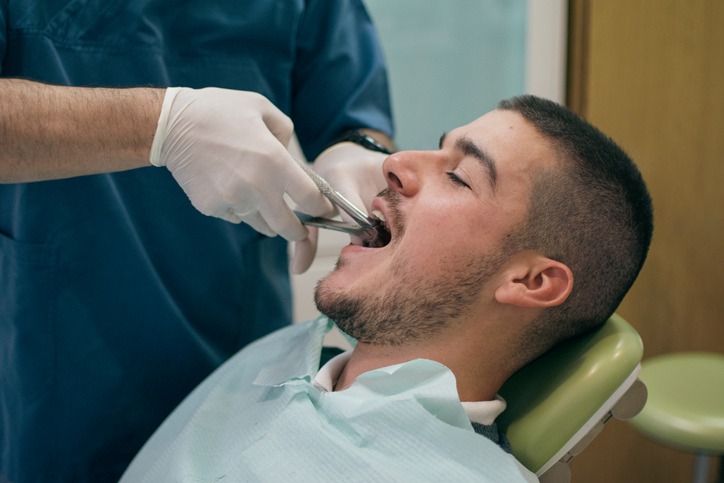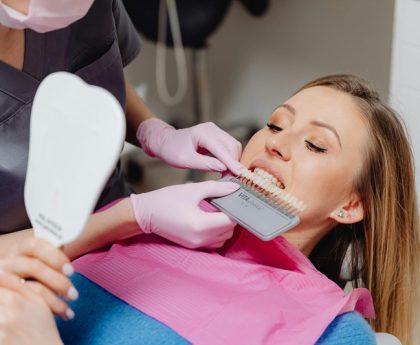Getting a tooth extracted can be an intimidating process, but knowing what to expect afterward can help ease your mind. In this article, we’ll cover what happens after you leave the dentist’s chair.
Immediately After the Tooth Extraction
The First 24 Hours
After a tooth extraction, your body begins the healing process immediately. Here’s what you can expect in the first 24 hours:
-
You may experience some pain and swelling. This is completely normal. Your dentist may recommend over-the-counter pain relievers or prescribe medication to help manage the pain.
-
A gauze will be placed over the extraction site to help stop the bleeding. It’s important to bite down on the gauze for 30-45 minutes to form a clot.
-
Rest is essential. Limit physical activity and keep your head elevated when lying down.
-
Avoid rinsing your mouth vigorously, as this could dislodge the clot and cause more bleeding.
During this initial period, you might also notice some discomfort or slight oozing of blood from the extraction site. This is all part of the normal healing process. If the bleeding persists after changing the gauze, contact your dentist for further advice.
Managing Pain and Swelling
Pain and swelling can be managed effectively with the right approach:
-
Use an ice pack on the outside of your cheek for 15-20 minutes at a time. This can help reduce swelling and numb the area.
-
Stick to a diet of soft foods and liquids. Gradually reintroduce solid foods as you feel more comfortable.
-
Avoid hot beverages, spicy foods, and anything that could irritate the extraction site.
In addition to these measures, keep your head elevated while sleeping. This can minimize swelling and help with overall comfort. A hydrated body heals faster, so drink plenty of water, but avoid using a straw as this might impact the clot in the healing socket.
If you had a tooth extracted and are considering replacement options, dentures Southampton could be a solution. Dentures are removable replacements for missing teeth and surrounding tissues. They come in two types: complete and partial. Discuss with your dentist what type would be best for your situation.
Days Two to Seven After the Extraction
Oral Hygiene Tips
Keeping your mouth clean is important to avoid infection:
-
Gently rinse your mouth with a saltwater solution (1/2 teaspoon of salt in 8 ounces of warm water) after meals to keep the extraction site clean.
-
Avoid brushing directly on the extraction site, but continue to brush and floss the rest of your teeth as normal.
-
Stay away from using straws, as the sucking motion can dislodge the clot protecting the extraction site.
It’s also a good idea to avoid smoking or using tobacco products. These can not only slow your healing process but also increase the risk of complications. By maintaining good oral hygiene and following these steps, you help ensure a smooth recovery after tooth extractions Southampton.
Signs of Potential Issues
While healing, it’s important to be aware of any complications. Contact your dentist if you experience:
-
Severe pain that does not subside with painkillers
-
Excessive swelling or bleeding
-
Fever or chills, which could indicate an infection
-
A bad taste or odor in your mouth, which could also signal infection
Keeping an eye on these potential issues can catch complications early, making it easier to treat them. If you suspect any problem, reaching out to your dentist sooner rather than later is the best course of action.
One possible problem when a tooth is extracted is misalignment. If you are looking to straighten your teeth after an extraction, Invisalign Southampton is a popular choice. Invisalign uses clear, removable aligners to straighten teeth gradually. It’s a discreet alternative to traditional braces and can be especially useful if you want to improve your smile post-extraction.
Longer-Term Recovery and Aftercare
When to Resume Normal Activities
Most people can return to their normal activities within a few days. Here are some guidelines:
-
Avoid strenuous exercise for at least a week to prevent dislodging the clot.
-
Follow up with your dentist for any recommended visits to check on your healing process.
-
Stick to the dietary recommendations, gradually working your way back to regular foods.
It’s also recommended that you increase your physical activity gradually. Listen to your body, and if you experience discomfort or prolonged swelling, consider holding off on intense exercise for a few more days.
Strategies for Long-term Healing
Maintaining a proper care routine and following your dentist’s advice will ensure your extraction site heals correctly:
-
Continue with gentle saltwater rinses up to a week post-extraction to keep the area clean.
-
Be mindful of food particles around the healing site and gently remove them if necessary.
-
If antibiotics are prescribed, take the full course as instructed by your dentist.
Following these strategies increases your chances of a smooth, infection-free recovery. Pay attention to any changes in the healing process, and do not hesitate to consult your dentist if you suspect anything out of the ordinary.
Final Thoughts
Knowing what to expect after a tooth extraction can make the experience less stressful. Follow the post-operative care tips provided by your dentist, and don’t hesitate to reach out to them if you have any concerns. Taking the right precautions ensures a smooth and comfortable recovery process. Proper preparation and aftercare are key to a swift recovery and maintaining overall dental health.





